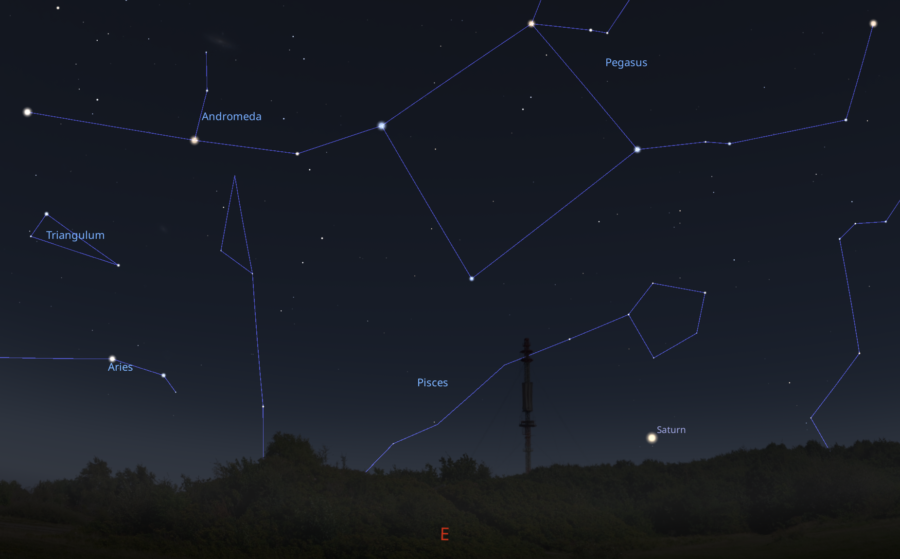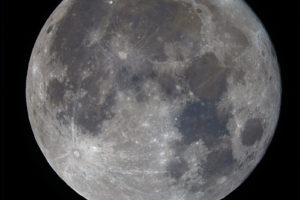Stars and constellations
Here is a star map of the sky for mid-October at around 8pm. At this time of year the Milky Way is glorious from dark sky locations away from light pollution. The planet Saturn is also shining brightly this year – more about that shortly.
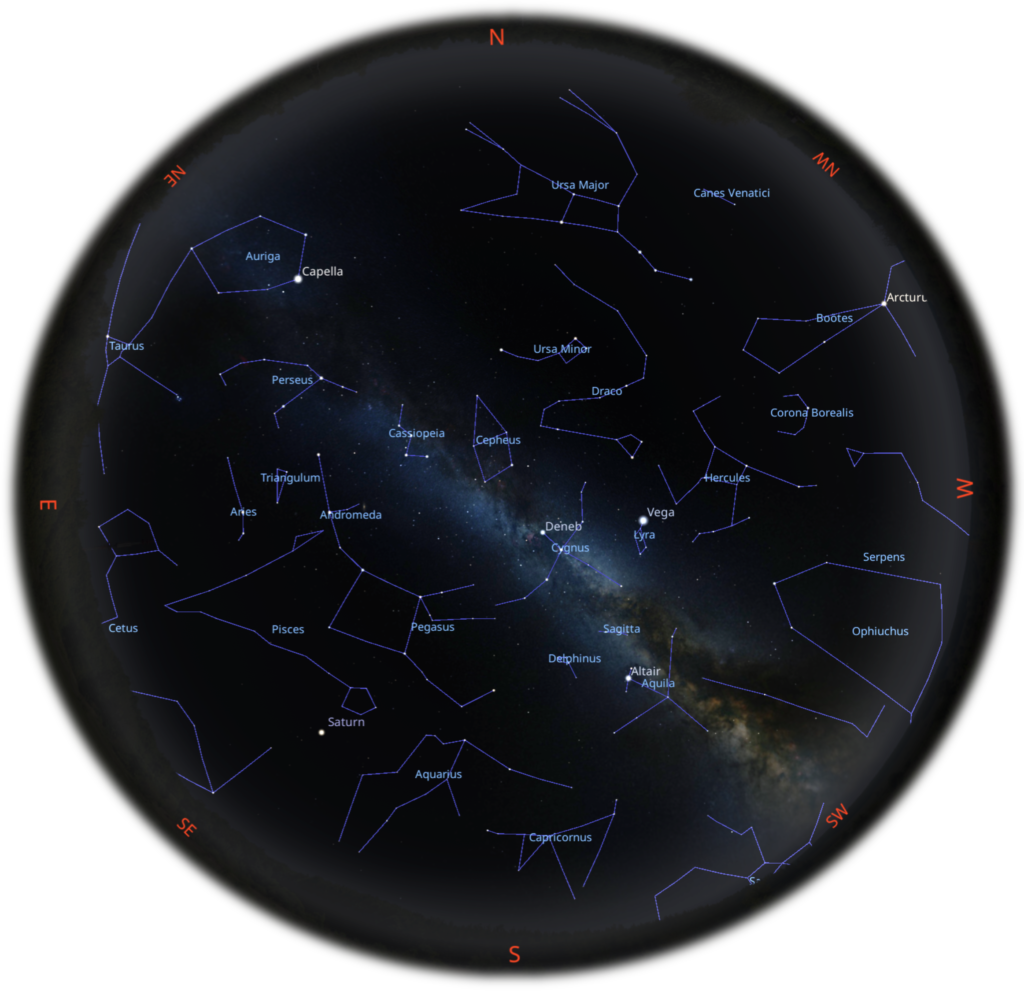
During autumn evenings the Milky Way stretches from southwest to northeast. The pale band of light passes almost overhead in Northumberland during the early evening. Sweeping a pair of binoculars through the middle of the Summer Triangle (the shape formed by the bright stars Vega, Deneb and Altair) will reveal countless stars and several prominent star clusters. When your night vision is fully adapted to seeing it – a prominent dark lane appears to bisect the Milky Way into two streams as it passes through the Summer Triangle. This is the Cygnus Rift; a feature made from vast clouds of interstellar dust which block the light of the more distant stars beyond.
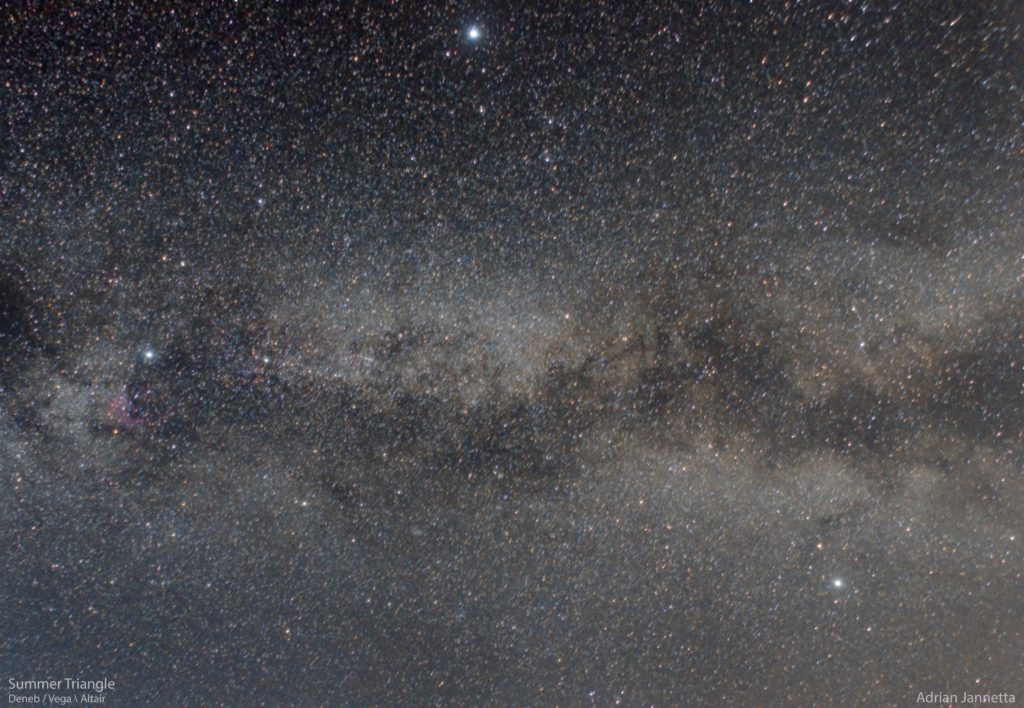
Autumn is one of my favourite times of the year to do astrophotography and visual observing with my 10 inch Dobsonian telescope. Here are some of the images I’ve captured at this time of year!
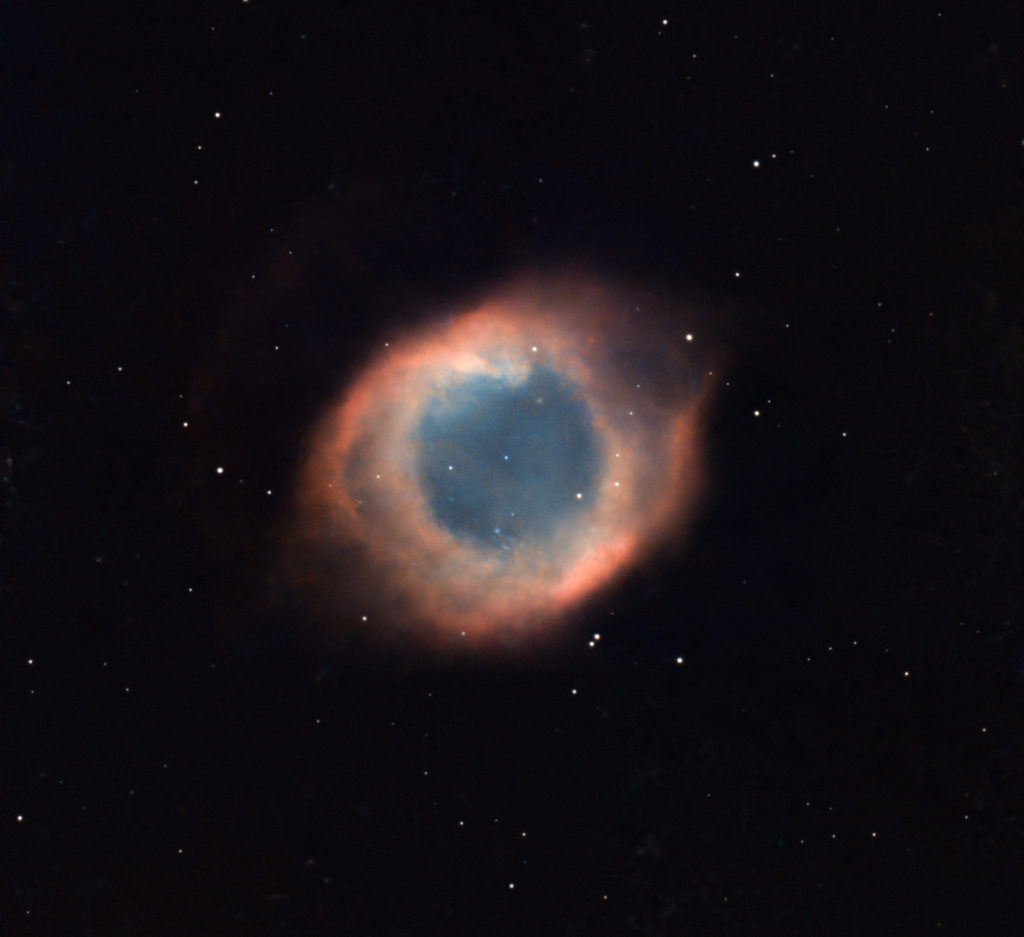
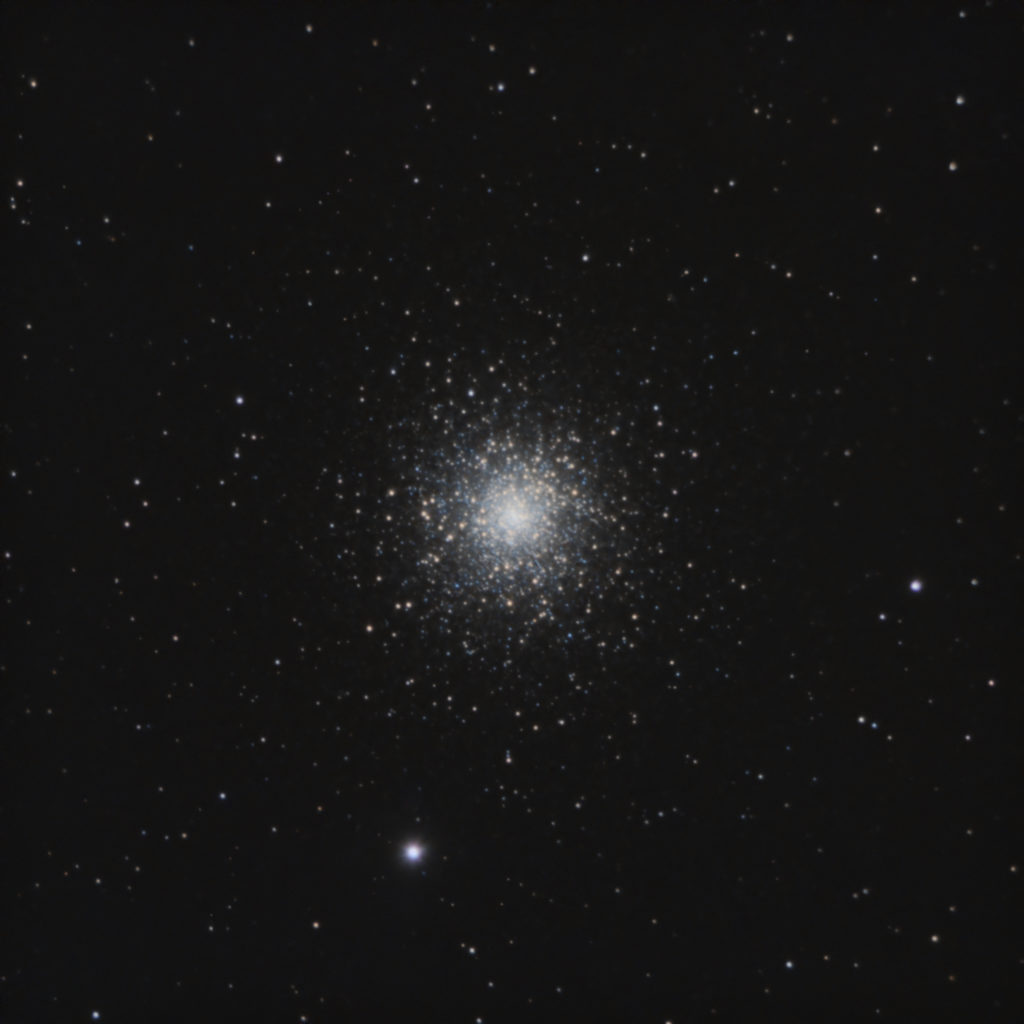
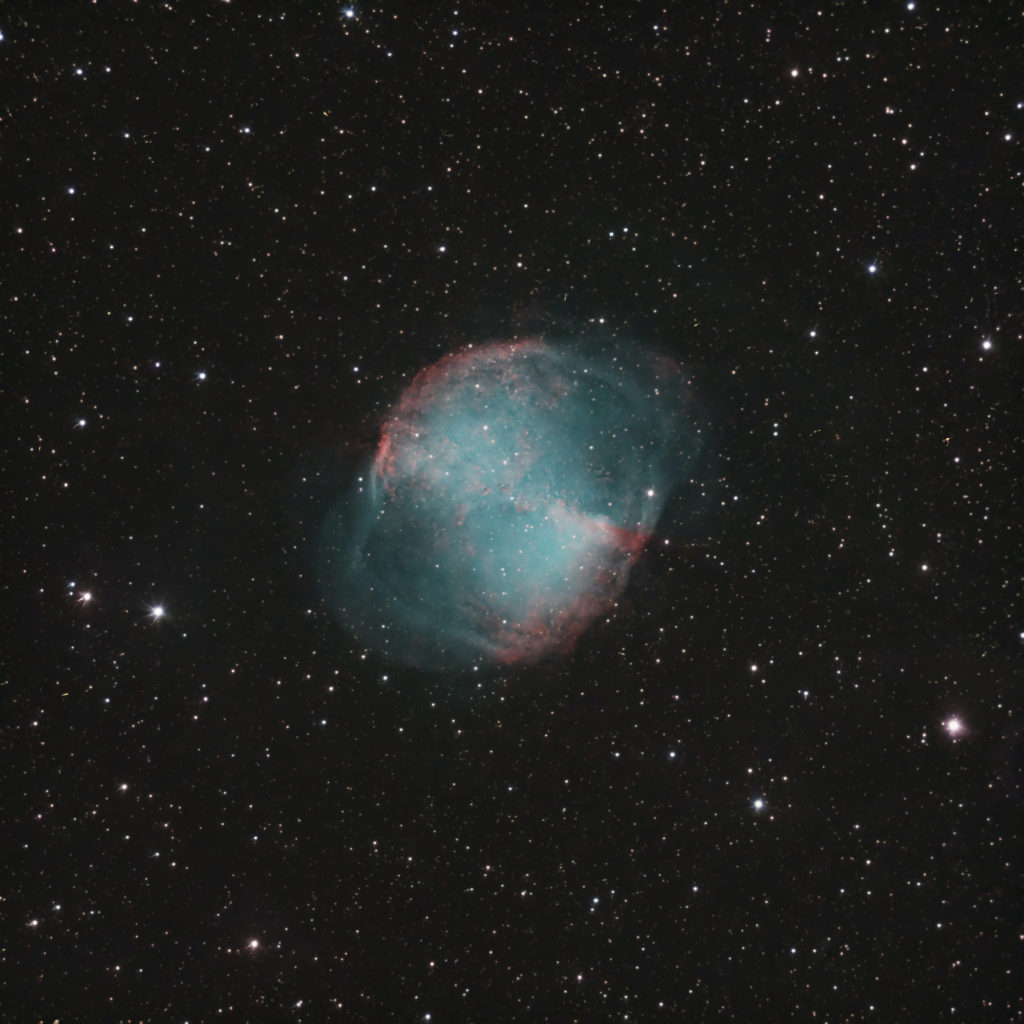
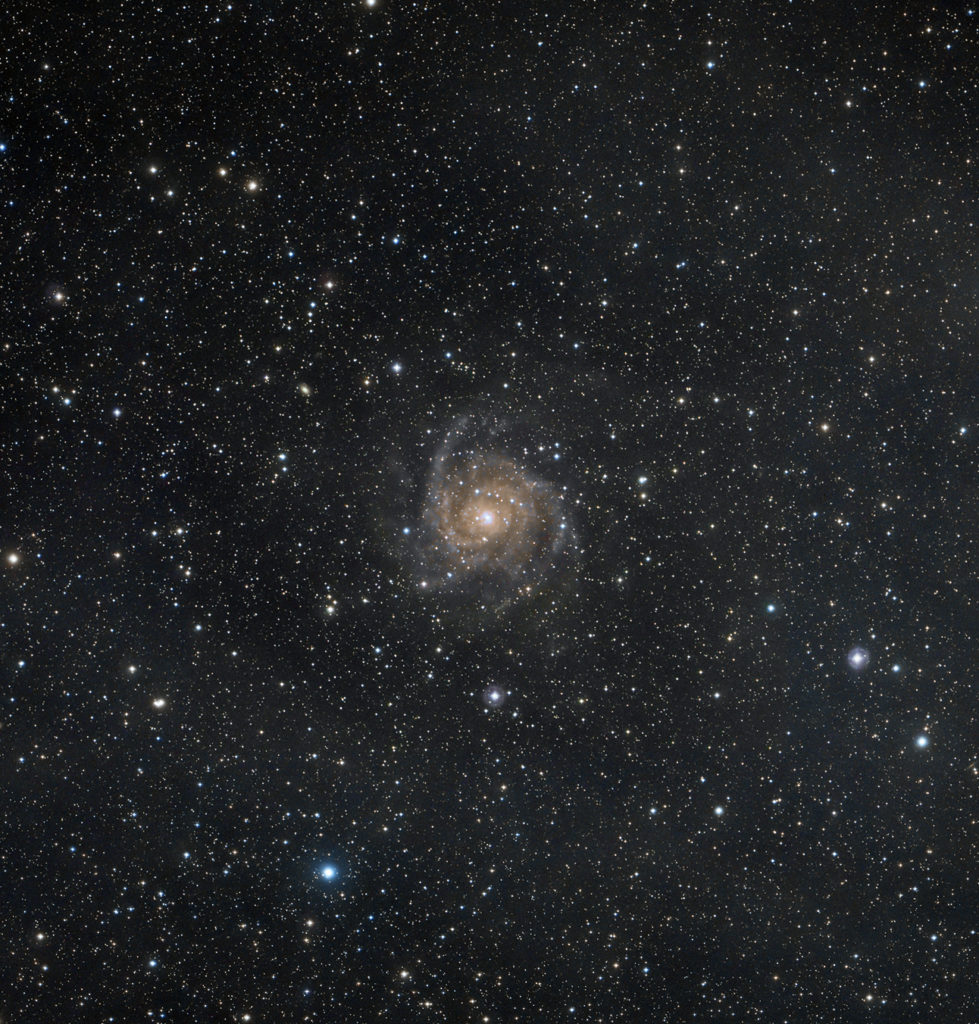
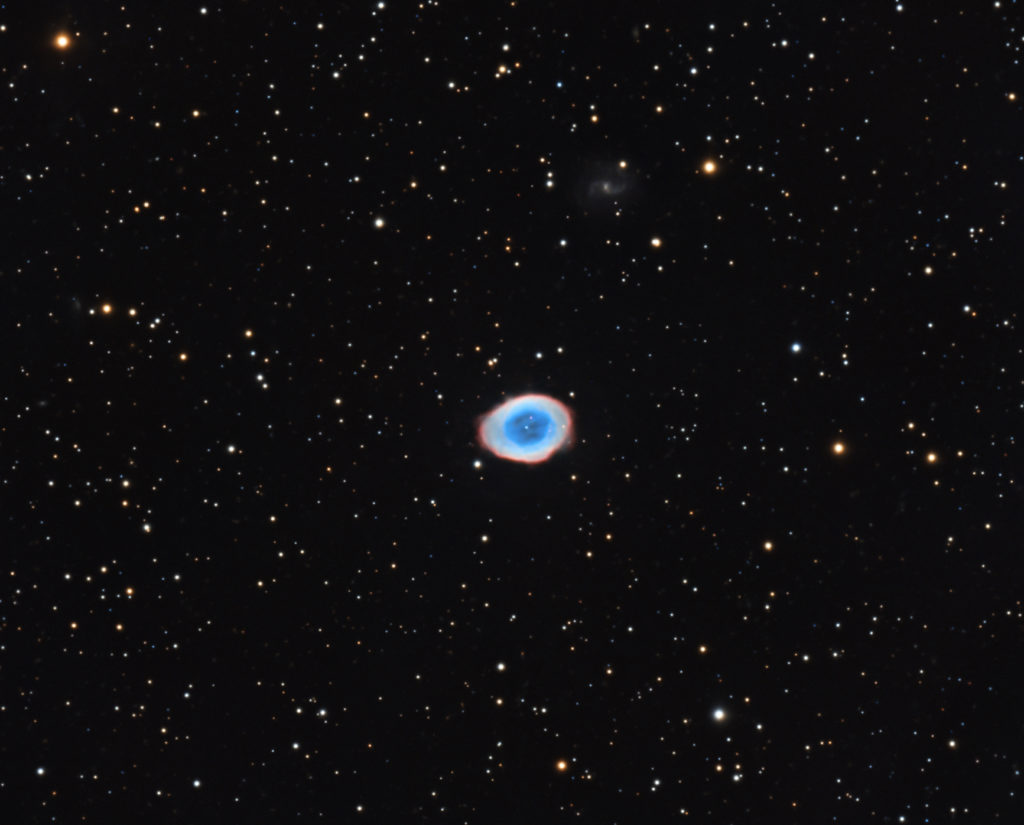
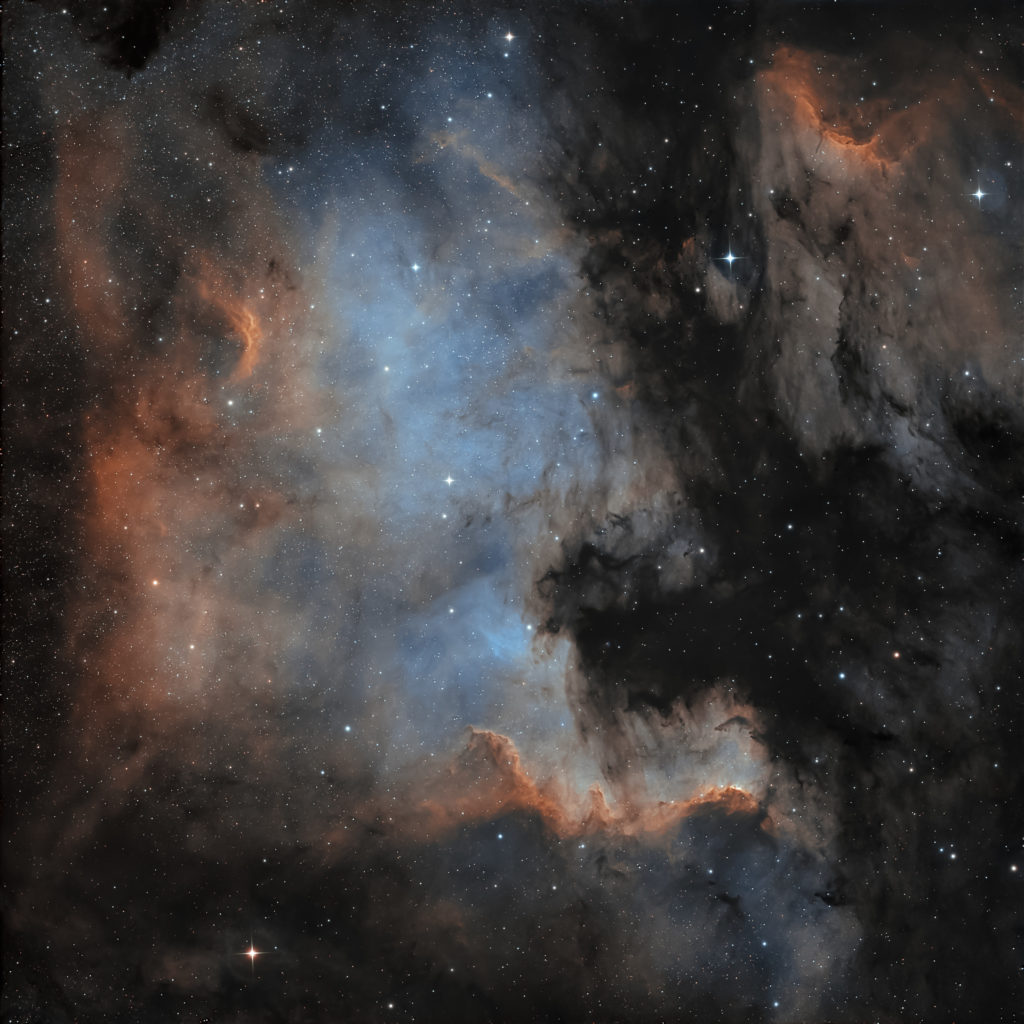

Autumn Galaxies
One of the most famous objects in the entire night sky is visible throughout the autumn and winter. In fact, it’s probably the most distant object you can see without optical aid: the Andromeda Galaxy. An entirely separate, and much larger, island of stars which is 2.5 million light-years from our own Milky Way galaxy. Our Milky Way is thought to contain up to 200 billion stars. The Andromeda Galaxy is home to around a trillion stars! (That’s roughly 5 times more). I can’t resist posting this image of it, taken from my back-garden:

The Andromeda Galaxy can be seen with the naked eye if you know where to look (and if you can escape local light pollution). In fact, you can use it to locate a second island of stars: the Triangulum Galaxy.
Face east and look just over half-way up the sky. Locate a prominent W-shape pattern of stars. This is the constellation Cassiopeia. Follow an arc to the right and down, as shown in the star chart below. The Andromeda Galaxy should be visible before you reach any other bright stars. Binoculars make this part easy. They are essential for the next part. Continue the arc downwards the same distance (you’ll pass an orange coloured star, called Mirach, on the way) and you’ll arrive at a slightly smaller, dimmer misty patch of light: the Triangulum Galaxy. Also known as M33, this galaxy is around 1/3 the size of our Milky Way and lies 2.7 million light-years away.
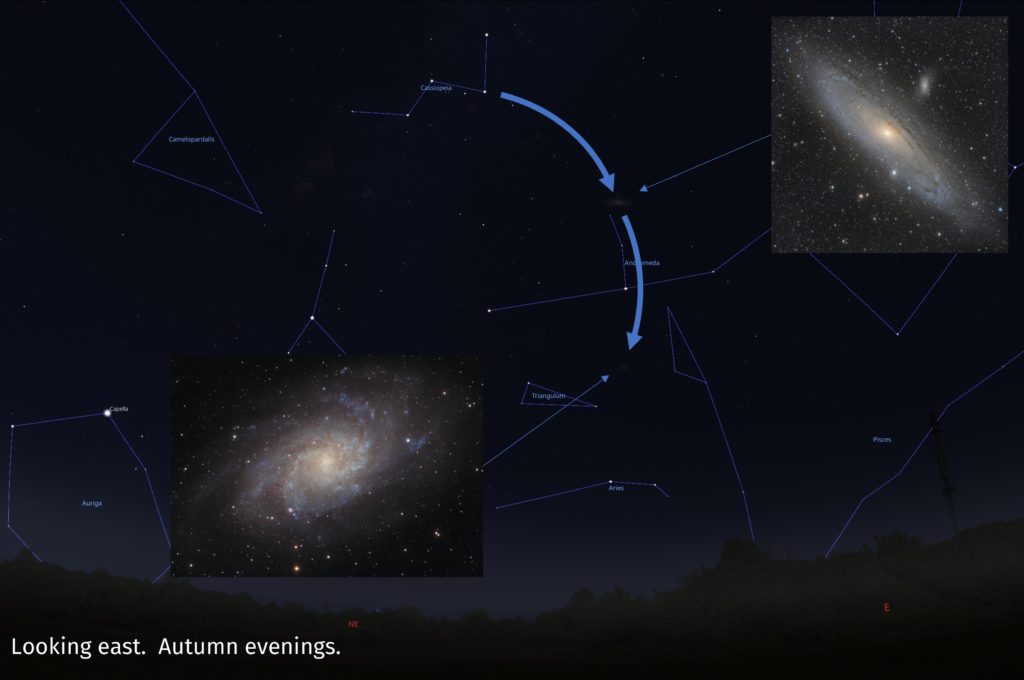
Saturn in the evening sky
The planet Saturn is situated exactly opposite to the Sun in the sky on 21-September. Throughout the autumn, Saturn will shine like a cream-coloured star in the southern sky after dark.
Saturn is a gas giant planet, made mostly of hydrogen and helium and it orbits the Sun more than 9 times further than the Earth every 29.6 years. Small telescopes can usually show a ring around Saturn fairly easily. However, in 2025, the rings are almost edgeways on to us and might cause a challenge unless you look carefully!

The reason for this is that Saturn is tilted at a constant angle as it orbits the Sun. During the course of its nearly 30-year orbit – we see the rings from above and below.
Every half an orbit (roughly 14-15 years) we experience a ring-plane crossing and the rings almost disappear.
The rings of Saturn are immense: they have a diameter of more than 170,000 miles. The rings are composed of trillions of tiny fragments of ice. They range in size from microscopic dust-size to perhaps a few metres across. However, the rings are confined to a very narrow plane – just 10 metres (30-feet!) thick – and that’s why they seem to disappear when viewed edge-ways on.
Comets
Last October, Comet 2023 A3 Tsuchinshan-ATLAS graced our evening sky before heading off to the far-reaches of the solar system. We may not see a comet as impressive this year but there are several note-worthy visitors coming, some of which may reach naked eye visibility soon.
Comet 2025 A6 (Lemmon)
Comet Lemmon (2025 A6) was discovered on 3-January 2025 (by the Mount Lemmon Survey) and is visible from Northumberland all night. Binoculars or telescopes are needed to see it. The star chart below shows the western sky shortly after sunset. Comet Lemmon is moving westwards beneath the stars of the Plough (part of Ursa Major) and above the bright orange star, Arcturus.
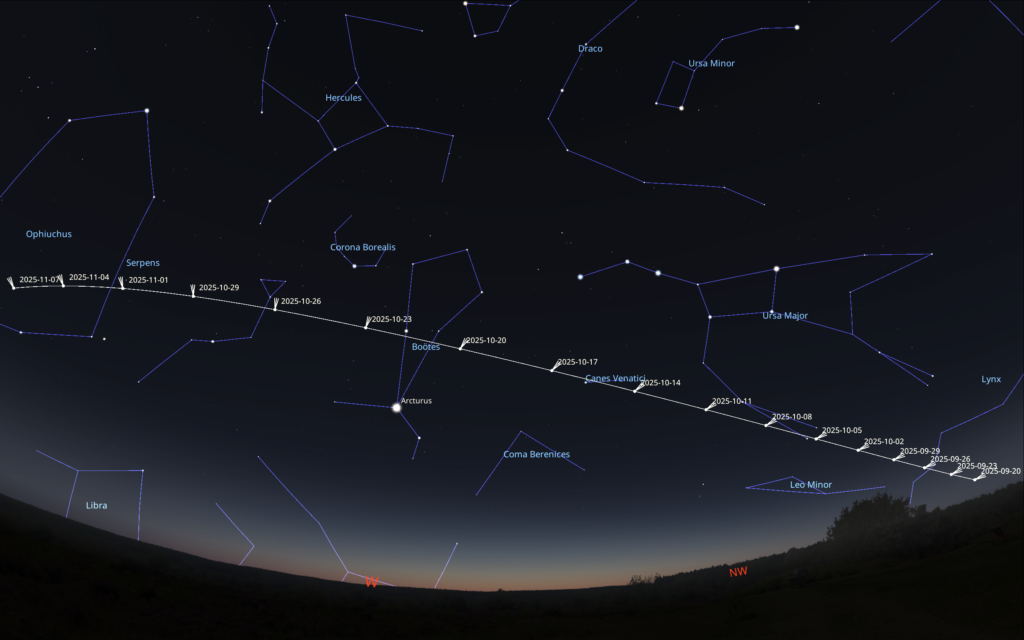
Comet 2025 R2 (SWAN)
The most recent comet to be discovered. Comet SWAN (2025 R2) was found on 11-September this year on images captured by the SWAN instrument on the SOHO solar observatory. Within days, it was visible with binoculars from the southern hemisphere and it looks set for a closest approach to Earth, of 24 million miles, on 19-October. By that time, it will be visible from the UK in the evening sky after dark. The star map below shows the path of the comet as it traverses the evening sky from 10-October until mid-November. It is possible the comet will be visible to the naked eye during October.
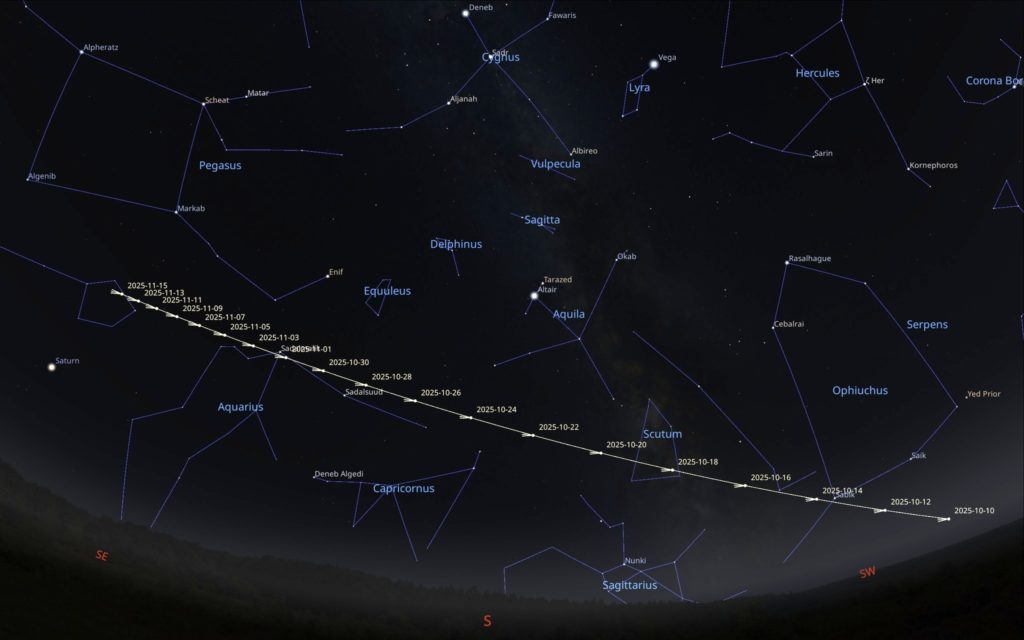
No, we are not being invaded by aliens

Social media has a lot to answer for. Let me elaborate. For the past several months there has been a flurry of hyped up news stories about the discovery of a new comet. The comet in question is coming from outside our solar system. It is an interstellar object and the third one to be found overall. It has been given the formal name 3I (ATLAS). It was discovered on July 1st by the ATLAS robotic survey – a system which searches for Near Earth Objects which might pose a danger to Earth. During the course of normal operations – a very slightly fuzzy object was discovered. Calculations showed the path of the object to moving very fast and from outside the solar system. Follow-up observations showed the object to be developing a coma (thin atmosphere surrounding the nucleus) and a short tail, which typical of comets approaching the Sun.
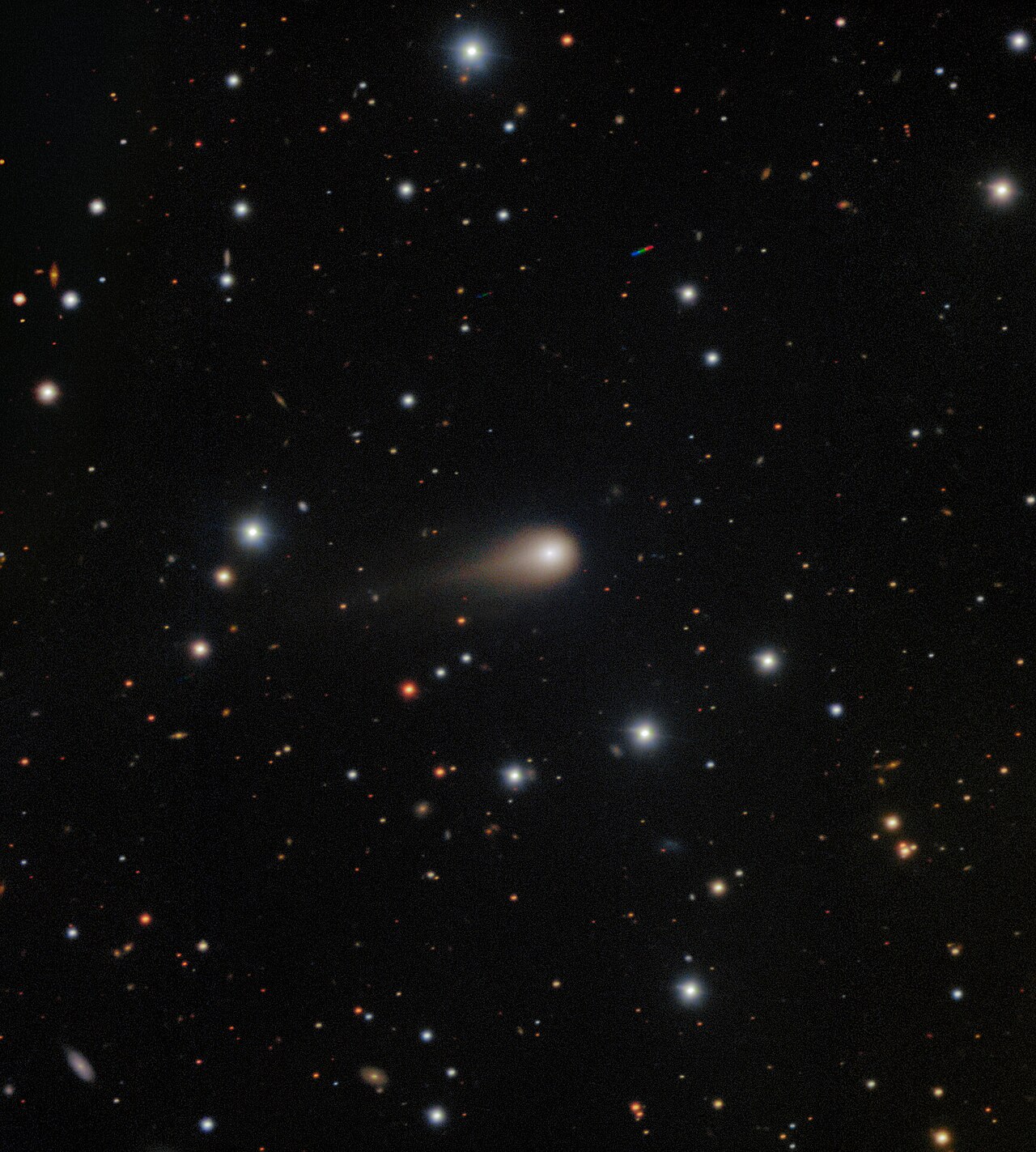
This was an exciting discovery. The comet has likely been travelling in our direction for hundreds of millions (if not billions) of years.
Tracing its trajectory back in time revealed that comet 3I ATLAS originated in a part of the Milky Way dominated by older stars than our Sun. In that case, 3I ATLAS is a time capsule of material from a much older star system. Estimates of its age lie between 7 and 10 billion years – much older than our 5 billion year old Sun. Astronomers hope to tease information out from the light of the comet as it approaches the Sun this autumn.
So why the hype?
Interstellar comets could approach the solar system from any direction. Above, below or from the side – there is no preferred direction for random visitors. However, the path of comet 3I is aligned closely with the plane of the solar system – to within a few degrees – and will pass close to a couple of planets. The comet passes close to Mars in the final week of September and close to Jupiter as it leaves the inner solar system in 2026.
It will not get particularly near the Earth at all. In fact – it will be behind the Sun and invisible from Earth when at its nearest point to the Sun. These facts led the Harvard Astronomer Avi Loeb to publish a short paper speculating that the unusual trajectory was indicative of a reconnaisance mission by a possible alien spacecract. Social media is currently leaning heavily into the words “Harvard Astronomer” and “Alien”. These stories have spread like wildfire in the months since. No matter that the object is showing all the hallmarks of a comet – albeit one which is chemically different to those we usually see.
After all of that – you might be disappointed to discover that 3I ATLAS will only be visible with the aid of a large telescope. As of September – the comet is invisible from the UK but will be detectable in the morning sky from November. Check the blog in November for more details and images.
Meteor showers
Finally, let’s finish with a summary of the meteor showers expected this autumn.
- Draconids (active between October 6-10) with a peak on October 8th. This is usually a fairly weak shower (a few per hour typically) and the waning gibbous moon will drown out some of the fainter meteors. However, this shower has been known to produce intense outbursts were dozens or even hundreds of meteors may be seen over brief periods. The radiant of the shower is in the constellation Draco (the Dragon) and close to the bright star Vega.
- Orionids (October 2-November 3) with a peak on October 20th/21st. These meteors produce up to 25 meteors per hour at the peak. The radiant is in the constellation Orion near the orange/red star Betelgeuse. Best time to look is between midnight and dawn on the night of the peak. The moon is no new so there will be no additional light interference.
- Taurids (October-November) with peaks on November 5th and November 12th. This is not a particularly rich meteor shower but it can produce slow, bright fireballs at any point. The meteors are associated with Comet Encke and they approach Earth relatively slowly compared to other meteors.
Wishing you clear, dark skies!
Adrian

